
- Index
- Artist
- Antonio Devity (4)
- Arthur Hierer (2)
- Charles Levier (3)
- Illegible (5)
- Illegible Signature (56)
- Jean Daumier (3)
- Julius Polek (3)
- L. Sihiinzel (4)
- London (4)
- Maren (3)
- Max Ernst (5)
- Reinald Morgen (3)
- Remedios Varo (7)
- See Description (9)
- T.bailey (4)
- Unknown (107)
- Unsigned (7)
- Vasselli (2)
- Yu Liang Jin (3)
- Yu Yin Xin (4)
- Other (862)
- Framing
- Item Length
- Material
- Size
- Unit Of Sale
GREAT ANTIQUE MODERN ART ABSTRACT CUBIST OIL PAINTING OLD VINTAGE CUBISM 1950s
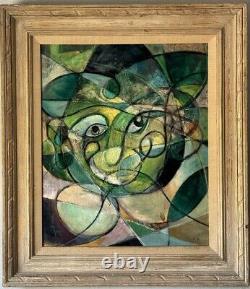
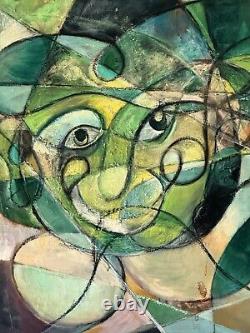
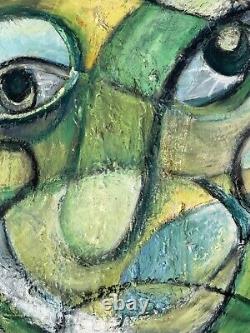
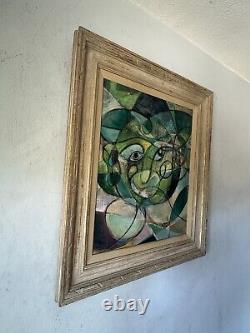
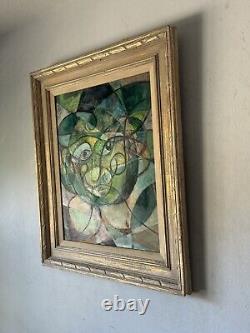
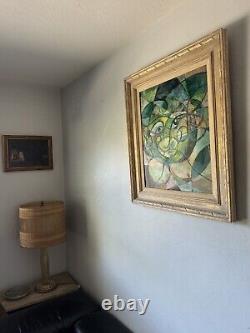
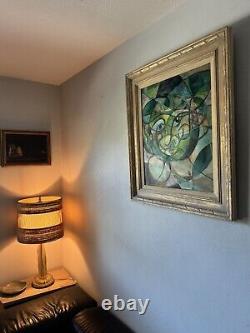

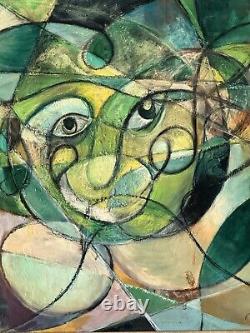
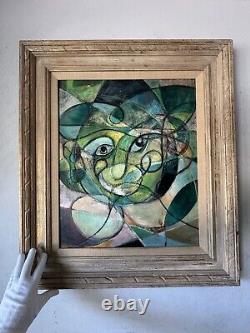
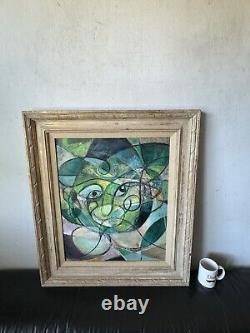
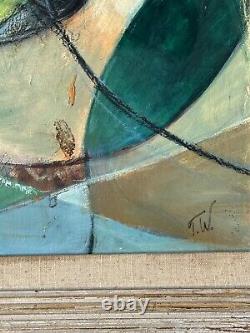
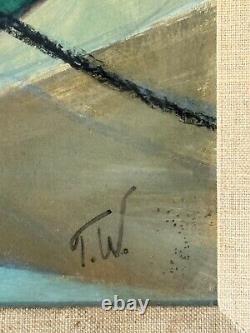
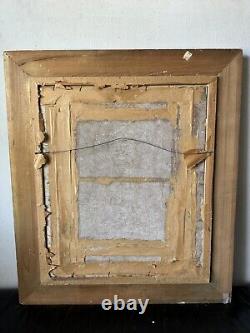


AMAZING AND OUTSTANDING ANTIQUE MODERN ABSTRACT CUBIST EXPRESSIONIST OIL PAINTING ON BOARD. THIS WORK DEPICTS A FANTASTIC FRAGMENTED AND GEOMETRICALLY DIVERSE COMPOSITION WITH ANGULAR SHAPES AND SHARP LINES THAT BREAK THE FACE INTO MULTIPLE PROSPECTIVES. SHADES OF GREEN DOMINATE THE SCENE WITH VARYING INTENSITIES AND TEXTURES, CREATING DEPTH AND CONTRAST. THE OVERALL EFFECT IS VIBRANT AND DYNAMIC WITH A PLAYFUL SURREAL QUALITY.
THIS PIECE IS SIGNED WITH THE INITIALS T. PERHAPS YOU RECOGNIZE THE ARTIST?
MILD SCRATCHES TO THE FRAME. PROVENANCE: PRIVATE ESTATE, BEVERLY HILLS CALIFORNIA. DIMENSIONS INCLUDING THE FRAME: 28"W x 32"H.
DIMENSIONS WITHOUT THE FRAME: 20"W x 24"H. Cubism was one of the most influential visual art styles of the early twentieth century.The French art critic Louis Vauxcelles coined the term Cubism after seeing the landscapes Braque had painted in 1908 at L'Estaque in emulation of Cézanne. Vauxcelles called the geometric forms in the highly abstracted works cubes. Other influences on early Cubism have been linked to Primitivism and non-Western sources. The stylization and distortion of Picasso's groundbreaking Les Demoiselles d'Avignon (Museum of Modern Art, New York), painted in 1907, came from African art.
Picasso had first seen African art when, in May or June 1907, he visited the ethnographic museum in the Palais du Trocadéro in Paris. The Cubist painters rejected the inherited concept that art should copy nature, or that artists should adopt the traditional techniques of perspective, modeling, and foreshortening. They wanted instead to emphasize the two-dimensionality of the canvas. So they reduced and fractured objects into geometric forms, and then realigned these within a shallow, relieflike space. They also used multiple or contrasting vantage points.
In Cubist work up to 1910, the subject of a picture was usually discernible. Although figures and objects were dissected or "analyzed" into a multitude of small facets, these were then reassembled, after a fashion, to evoke those same figures or objects. During Analytic Cubism (1910-12), also called "hermetic, " Picasso and Braque so abstracted their works that they were reduced to just a series of overlapping planes and facets mostly in near-monochromatic browns, grays, or blacks. In their work from this period, Picasso and Braque frequently combined representational motifs with letters (1999.363.63; 1999.363.11). Their favorite motifs were still lifes with musical instruments, bottles, pitchers, glasses, newspapers, playing cards (1997.149.12), and the human face and figure.
During the winter of 1912-13, Picasso executed a great number of papiers collés (1999.363.64). With this new technique of pasting colored or printed pieces of paper in their compositions, Picasso and Braque swept away the last vestiges of three-dimensional space (illusionism) that still remained in their "high" Analytic work.
Whereas, in Analytic Cubism, the small facets of a dissected or "analyzed" object are reassembled to evoke that same object, in the shallow space of Synthetic Cubism-initiated by the papiers collés-large pieces of neutral or colored paper themselves allude to a particular object, either because they are often cut out in the desired shape or else sometimes bear a graphic element that clarifies the association. While Picasso and Braque are credited with creating this new visual language, it was adopted and further developed by many painters, including Fernand Léger (1999.363.36), Robert and Sonia Delaunay, Juan Gris (1996.403.14), Roger de la Fresnaye (1991.397), Marcel Duchamp, Albert Gleizes, Jean Metzinger (59.86), and even Diego Rivera (49.70.51). Though primarily associated with painting, Cubism also exerted a profound influence on twentieth-century sculpture and architecture. The major Cubist sculptors were Alexander Archipenko, Raymond Duchamp-Villon, and Jacques Lipchitz. The liberating formal concepts initiated by Cubism also had far-reaching consequences for Dada and Surrealism, as well as for all artists pursuing abstraction in Germany, Holland, Italy, England, America, and Russia.

